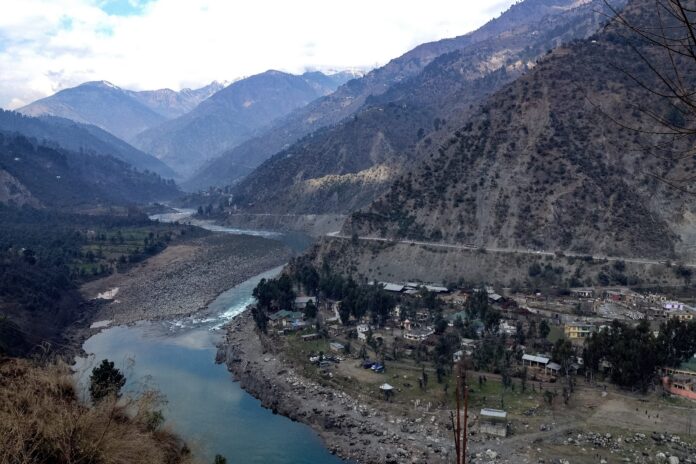India on Monday drastically reduced the release of water from its Baglihar Dam in Jammu and Kashmir area to Pakistan‘s River Chenab which irrigates the key agrarian lands all the way from Eastern border city of Sialkot to southern Punjab on the edge of Indus River.
Pakistani authorities reported a sudden decrease in downstream water flows, raising concern for Pakistan as cultivation of paddy and cotton crops in the areas along the river Chenab is just round the corner.
Pakistan’s Water and Power Development Authority, WAPDA, confirmed the significant drop.
The amount of water entering the Chenab River has fallen sharply, by 29,300 cusecs to just 5,300 cusecs Monday morning from a normal of 34,600 cusecs on Sunday.
Meanwhile, Indus River System Authority (IRSA) has expressed serious concern over the drastic drop by India in the water flow of Chenab River.
IRSA’s Advisory Committee met in Islamabad on Monday with its Chairman Sahibzada Muhammad Shabir evaluating the high-stakes water availability during the crop season Kharif that lasts from April 1 through September 30.
In order to deal with the water shortage, the provinces mutually agreed on a joint reservoir utilization and equitable distribution of water. IRSA would daily monitor the availability of water, and another committee meeting will be convened in early May for recalculation.
Punjab, the largest agricutlural land, will get 31.3 million acre-feet (MAF) of water, Sindh 28.9 MAF, Balochistan 2.9 MAF, and Khyber Pakhtunkhwa 0.8 MAF, as per IRSA formula. Punjab and Sindh will share the shortage of the water equally.
The water shortage is estimated to be 43% at the beginning of the Kharif season in March. This was revised to 27% in mid-April, and now further to 21%.
On the other hand, reports say India has begun work to boost reservoir holding capacity at two hydroelectric projects in the India-occupied Kashmir, after fresh escalation with Pakistan led it to suspend the Indus Waters Treaty.
Tensions between the two countries have skyrocketed following the April 22 attack in occupied Kashmir’s Pahalgam that killed 26 people, mostly tourists, marking one of the deadliest assaults in the last two decades.
New Delhi alleged that the gunmen had links to Pakistan. Islamabad has rejected the claim saying India has provided no evidence whatsoever to support its claim.
Pakistan depends on river outflows from the strategic Jammu and Kashmir region to meet its irrigation and hydropower demands of production.
There are more than half a dozen dam projects in the region.
India had suspended the Indus Water Treaty soon after the attack. The treaty governed a fair distribution of downstream water flowing from the Himalayan region.
Reports say India has begun work on the Salal and Baglihar projects, for the first time since they were built in 1987 and 2008-2009. The water treaty disallowed such work.
India’s water minister has vowed to “ensure no drop of the Indus river’s water reaches Pakistan”.
Government officials and experts on both sides say India cannot stop water flows immediately.
Indus Water Treaty has allowed it only to build hydropower plants without significant storage dams on the three rivers allocated to Pakistan.
The suspension means India “can now pursue our projects at free will”, said Kushvinder Vohra, a recently retired head of India’s Central Water Commission who worked on Indus disputes with Pakistan.
Indian Prime Minister Narendra Modi’s government has sought to renegotiate the treaty in recent years, and the two countries have tried to settle some of their differences at the Permanent Court of Arbitration in the Hague.
These concerns relate to the size of the water storage area at the region’s Kishanganga and Ratle hydroelectric plants.














